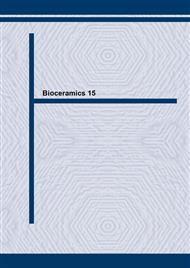[1]
Huang, J.I., et al (2002) Rat extramedullary adipose tissue as a source of osteochondrogenic progenitor cells. Plastic &Reconstructive Surgery 109(3), pp.1033-1041
DOI: 10.1097/00006534-200203000-00037
Google Scholar
[2]
Zuk, P.A., et al (2001) Multi-lineage cells from human adipose tissue: Implications for cell based therapies. Tissue Engineering 7(2) pp.211-28
Google Scholar
[3]
Halvorsen, H.D.C., et al (2001) Extracellular matrix mineralization and osteoblast gene expression by human adipose tissue-derived stromal cells. Tissue Engineering 7(6) pp.721-741
DOI: 10.1089/107632701753337681
Google Scholar
[4]
Lecoeur, L., Ouhayoun, J.P. (1997) In vitro induction of osteogenic differentiation from non-osteogenic mesenchymal cells. Biomaterials 18:989.
DOI: 10.1016/s0142-9612(97)00025-2
Google Scholar
[5]
Bruder, S.P. et al (1998) the effect of implants loaded with autologous mesenchymal stem cells on the healing of canine segmental bone defects. J. Bone Joint Surg. (Am.) 80:985
DOI: 10.2106/00004623-199807000-00007
Google Scholar
[6]
Pittenger, M.F., Mackay, A.M., Beck, S.C., et al (1999) Multilineage potential of adult human mesenchymal stem cells. Science 284:143
Google Scholar


